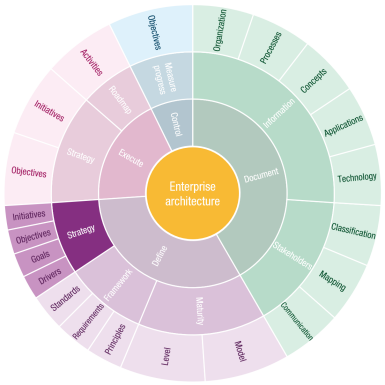Creating a business strategy has long been recognized as one of the most important ways to allocate resources within an organization to achieve specific goals. This strategy is then implemented to achieve these goals, and often includes the processes by which it is created. It also includes initiatives for implementing it, and techniques for controlling and monitoring the initial implementation. Strategy formulation addresses aspects of organizational motivation such as vision, mission, and goals. It builds on an organization’s drivers to provide an actionable path for achieving some or all of its goals.

Communication is key
Although organizations generally agree that the ability to execute a strategy is essential to achieving goals, by no means do all organizations properly translate it into execution. One of the most glaring failures is the lack of communication of the strategic course to the people in the organization. Yet, this is one of the most important factors for a successful implementation.
It is important that all employees are familiar with the strategy. That not everyone in the organization knows exactly how it translates into goals and objectives is not such a problem. However, every employee should be aware of its existence. After all, employees must work together to achieve the same goals. Nevertheless, many organizations forget to communicate the strategy to employees. Research has shown that, on average, about 95% of employees do not know what the organization’s strategy is or how they fit into it1.
Communicating the strategy is very important. It is therefore important to do it properly, for example by using effective communication methods. The Communications Plan is one such method. It can be used to communicate the transition from strategy to implementation within the organization. Similarly, when a strategic course changes, it is important to communicate the changes appropriately to the internal organization. Changes need to be brought to the attention of the organization on an ongoing basis with some form of regularity.
Basic strategic elements
Establishing, or sometimes first distilling, drivers, goals, and objectives is one of the activities an Enterprise Architect must perform to arrive at initiatives that will help the organization achieve its strategic goals.
Virtually all architecture frameworks state that establishing (or distilling) goals and objectives is one of the first steps in developing an Enterprise Architecture. In practice, however, this happens later in the process. Admittedly, in an ideal world, establishing goals and objectives would be one of the first activities. After all, everything that follows depends on or is related to those goals and objectives. But practice is often more unruly. Therefore, the Enterprise Architecture Implementation Wheel takes a different approach and sequence. The strategy, drivers, goals, objectives and initiatives are defined in the second stage (Define).
Architecture artifacts and deliverables
The following architecture artifacts can be created during the third step of the second stage of the Implementation Wheel. The focus of the artifacts lies heavily on the basic strategic elements, namely drivers, goals, and objectives.
Explore the other steps
- Harvard Business School Online, “5 keys to successful strategy execution”, https://online.hbs.edu/blog/post/strategy-execution, 2020. ↩︎


